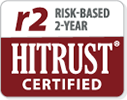The Centers for Medicare & Medicaid Services (CMS) officially announced capitation rates for Medicare Advantage (MA) plans for CY 2025 – average increase of 3.7% or $16 billion in 2025 over 2024 in expected MA payments. CMS explains, in details, the derivation of the rate increases in the April 1, 2024 final announcement – changes in STAR rating measures are expected to decrease bonus payments to MA plans by 0.11%, risk model revision and normalization will trim rates by 2.45%, compared to 2.16% in 2024 and MA Score Trend contributes 3.86% to the 2025 rate, versus 4.44% for 2024.
Some stakeholders are concerned about this meager increase citing rising expenditure in providing healthcare services to seniors due to uptake in elective procedures deferred from the pandemic era and costs. Regulatory changes in risk adjustment – updated risk adjustment model blends 67% of the risk score calculated using the updated 2024 MA risk adjustment model and coding normalization using fee-for-service coding trends from periods impacted by the COVID-19 pandemic – also add to the concerns. The redesigned Part D structure in 2025 put additional financial pressures on drug plans – beneficiaries’ out-of-pocket expenses are capped at $2,000 and Medicare reinsurance will be scaled back to 20% of the allowed cost for applicable drugs and 40% for non-applicable drugs (e.g., generics) beginning in 2025[1]. Part D plans’ share of costs will increase from 15% to 60% for both brands and generics in the catastrophic phase, and drug manufacturers will be required to provide a 20% price discount on brand-name drugs[2]. The base beneficiary premium (BBP) will be capped at 6% from prior year from 2024 to 2029[3].
On top of the above, in February 2024, CMS announced coverage of drugs classified as GLP-1 (glucagon-like peptide 1) agents for beneficiaries to manage weight provided they have obesity-related comorbidities such as diabetes and cardiovascular risks. The annual cost of a GLP-1 agent is around $13,600. Spending on Ozempic (a GLP-1 agent) alone, for instance, increased substantially between 2021 and 2022, rising from a tenth-place ranking among the 10 top-selling Part D drugs in 2021, with gross spending of $2.6 billion, to sixth place in 2022, with spending of $4.6 billion[4]. In total, gross spending under Medicare Part D was $240 billion in 2022; Ozempic accounted for 2% of this amount, before rebates[5]. The cost to Medicare Part D would be $26.8 billion if only 10% of those beneficiaries used the branded drug Wegovy (semaglutide, another GLP-1 agent)[6]. Even if the GLP-1 agents are selected for price negotiation, negotiated price will not come to fruition until 2027.
MA sponsors has a lot to digest following the official rate announcement although none should be a surprise as CMS has informed MA sponsors of forthcoming policy changes in the January 2024 Advance Notice and Part D redesign required by the Inflation Reduction Act of 2022 after its passage. While the actuaries for MA plans will be busy honing in on their projections, staff members at the plans can also participate in ensuring that payments from Medicare can cover the needed services for their enrollees.
First and foremost is for Case Managers to know the demographics and needs of their enrollees beyond physical health needs. Enrollees experiencing financial, food and housing insecurity cannot follow guidance to stay healthy and be free of illness episodes that may trigger ambulance service, Emergency Room visits or inpatient hospitalization. To illustrate, transportation can be a critical benefit to enrollees who cannot drive to their medical appointments even when supplemental benefits may be curtailed. Some community pharmacies offer free drug delivery services that can be tapped to aid enrollee adherence to their maintenance drugs. Limited English Proficiency can be a barrier to receiving adequate care from providers. Language assistance is necessary. Streamlining PA requirements and reducing disruptions for new enrollees is also helpful.[7]
Incidentally, CMS is finalizing a health equity index (HEI) reward, beginning with the 2027 Star Ratings, to further encourage MA and Part D plans to improve care for enrollees with certain social risk factors. Ensuring health equity for enrollees can improve STAR performance.[8]
Second is to improve access to behavioral health. CMS require MAOs to establish care coordination programs, including coordination of community, social, and behavioral health services to help move towards parity between behavioral health and physical health services and advance whole-person care. If an MAO can identify community resources to assist enrollees, they may not have to pay out of their capitation revenues.
Third, utilization management is important under budget constraint. Managing utilization does not equate to restricting access or use. CMS allows MAOs various ways to manage utilization so long as plan enrollees have access to the same covered benefits as those in Traditional Medicare and MAOs are to follow national coverage determinations (NCD), local coverage determinations (LCD), and general coverage and benefit conditions included in Traditional Medicare regulations.[9] Step Therapy for Part B guidance published by CMS on August 7, 2018, shows one of the ways to manage utilization compliantly. Using biosimilars for Part B have a higher reimbursement rate than the reference products[10] is another incentive for providers. Using the appropriate site of care also makes a difference in fees – some procedures can be safely performed in physician offices (place of service/POS code 11) instead of On Campus Outpatient Hospital (POS 22) or Ambulatory Surgical Center (POS 24). These would need to be in the contractual agreement with or agreeable to providers.
Four, non-cash incentives to enrollees for self-management – educating enrollees about self-management or self-care reaps long-term benefits – nutritional classes, general overview of safe drug use and drug interactions and using AB-rated generic equivalent formulations instead of brand drugs[11]. Incentives can take the form of points redeemable for groceries which can supplement the purchase of healthy food. Sometimes spending is inevitable to achieve future gains and savings. The types of spending would require planning and thoughtful implementation.
Inovaare has Medicare subject matter experts who can help MAOs prepare training sessions, educational materials in addition to software tools to identify enrollees for case management and to analyze utilization data for strategic improvements. Contact us at 1.408.850.2235 to discuss what we can do to help.
[1] Medicare’s reinsurance payments to Part D plans accounted for close to half (48%) of total Part D spending in 2022, up from 14% in 2006, based on data from the Medicare Trustees 2023 annual report.
[2] https://www.inovaare.com/understanding-the-2025-medicare-part-d-re-design-what-you-need-to-know/
[3] BBP is one component of the Part D premium. Drug plans can add fees to the BBP for the Part D premium for members
[4] https://www.healthcarefinancenews.com/news/medicare-spending-ozempic-sees-huge-spikes
[5] Medicare’s actuaries estimated rebates to be 31.5% overall in 2022 but could be as high as 69% for Ozempic
[6] https://www.vumc.org/health-policy/medicare-antiobesity-medications-nejm
[7] CMS 4201F April 5, 2023
[8] Id
[9] Id
[10] Reference products or the drugs with the original patent generally cost more than biosimilar.
[11] CMS’ 40% subsidy for non-applicable drugs (generics) is tacit encouragement for using approved generics


